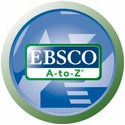Novosti
|
This journal is indexed in Scopus |
|---|
Year 2007 Vol. 15 No 3
ORIGINAL INVESTIGATIONS
GIDRANOVICH A.V.
AUTOCRINE CELL MOBILITY FACTOR IN THE BREAST CANCER PATIENTSТ BLOOD SERUM
The analysis of autocrine mobility factor (AMF) activity in the blood serum of healthy donors and breast cancer patients on different stages of the disease was performed. Statistically significant increase of AMF activity in serum of the breast cancer patients was determined. The activity of AMF in the metastasis breast cancer patientsТ serum was maximal. In the 1st, 2nd, 3rd stages of breast cancer the stable elevated level of AMF activity was observed. Stage 4 was characterized by highly elevated activity of AMF. The high increase of AMF in breast cancer patientsТ serum may be a screening marker of early hematogenic metastasis risk.
Keywords: breast cancer, autocrine factor of mobility, AMF.
p. 8 - 15 of the original issue
References
- Purification of B16-F1 melanoma autocrine motility factor and its receptor / S. Silletti [et al.] // Cancer Res. Ц 1991. Ц Vol. 51. Ц P. 3507Ц3511.
- Tsuboi, K. K. Phosphoglucose isomerase from human erythrocyte. Preparation and properties / K. K. Tsuboi, K. Fukunaga, C. H. Chervenka // J. Biol. Chem.Ц 1971.Ц Vol. 246, N 24.Ц P. 7586Ц7594.
- Neuroleukin: a lymphokine product of lectin-stimulated T cells / M. E. Gurney [et al.] // Science. Ц 1986. Ц Vol. 234. Ц P. 574Ц581.
- The differentiation and maturation mediator for human myeloid leukemia cells shares homology with neuroleukin or phosphoglucose isomerase / W. Xu [et al.] // Blood. Ц 1996. Ц Vol. 87. Ц P. 4502Ц4506.
- Glucosephosphate isomerase (GPI) deficiency mutations associated with hereditary nonspherocytic hemolytic anemia (HNSHA) / E. Beutler [et al.] // Blood Cells Mol. Dis. Ц 1997. Ц Vol. 23. Ц P. 402Ц409.
- Arthritis provoked by linked T and B cell recognition of a glycolytic enzyme / I. Matsumoto [et al.] // Science. Ц 1999. Ц Vol. 286. Ц P. 1732Ц1735.
- Expression of autocrine motility factor receptor correlates with disease progression in human gastric cancer / Y. Hirono [et al.] // Br. J. Cancer. Ц 1996. Ц Vol. 74. Ц P. 2003Ц2007.
- Autocrine motility factor receptor in human bladder carcinoma: gene expression, loss of cell-contact regulation and chromosomal mapping / S. Silletti [et al.] // Int. J. Oncol. Ц 1993. Ц є 3. Ц P. 801Ц807.
- Autocrine motility factor signaling induces tumour apoptotic resistance by regulations Apaf-1 and Caspase-9 apoptosome expression /A. Haga [et al.] // Int. J. Cancer. Ц 2003. Ц Vol. 107. Ц P. 707Ц714.
- Activation of small GTPase Rho is required for autocrine motility factor signaling / S. Tsutsumi [et al.] // Cancer Res. Ц 2002. Ц Vol. 62. Ц P. 4484Ц4490.
- Tumour autocrine motility factor responses are mediated through cell contact and focal adhesion rearrangement in the absence of new tyrosine phosphorylation in metastatic cells / S. Silletti [et al.] // Am. J. Pathol. Ц 1996. Ц Vol. 148. Ц P. 1649Ц1660.
- Autocrine motility factor signaling enhances pancreatic cancer metastasis / S. Tsutsumi [et al.] // Clin. Cancer. Res.Ц 2004.Ц N 10.ЦP. 7775Ц7784.
- Autocrine motility factor induces differential 12-lipoxygenase expression and activity in high- and low-metastatic K1735 melanoma cell variants / S. Silletti [et al.] // Cancer Res. Ц 1994. Ц Vol. 54. Ц P. 5752Ц5756.
- Regulation of tumor cell motility by 12(S)-HETE / S. Silletti [et al.] // Adv. Exp. Med. Biol. Ц 1997. Ц Vol. 400B.Ц P. 683Ц692.
- Expression and function of the AMF receptor by human melanoma in experimental and clinical systems / J. Timar [et al.] // Clin. Exp. Metastasis. Ц 2002. Ц Vol. 19. Ц P. 225Ц232.
- Autocrine motility factor enhances hepatoma cell invasion across the basement membrane through activation of beta1 integrins / T. Torimura [et al.] // Hepatology. Ц 2001. Ц Vol. 34. Ц P. 62Ц71.
- Autocrine motility factor signaling enhances pancreatic cancer metastasis / S. Tsutsumi [et al.] // Clin. Cancer Res. Ц 2004. Ц N 10. Ц P. 7775-7784.
- Expression of autocrine motility factor receptor correlates with disease progression in human gastric cancer / Y. Hirono [et al.] // Br. J. Cancer. Ц 1996. Ц Vol. 74. Ц P. 2003Ц2007.
- Significance of autocrine motility factor receptor gene expression as a prognostic factor in non-small-cell lung cancer / I. Takanami [et al.] // Int. J.Cancer. Ц 2001. Ц Vol. 95. Ц P. 384Ц387.
- Expression and function of the AMF receptor by human melanoma in experimental and clinical systems / J. Timar [et al.] // Clin. Exp. Metastasis. Ц 2002. Ц Vol. 19. Ц P. 225Ц232
- Significance of autocrine motility factor receptor gene expression as a prognostic factor in non-small-cell lung cancer / I. Takanami [et al.] // Int. J. Cancer. Ц 2001. Ц Vol. 95. Ц P. 384Ц387.
- Antihuman epidermal growth factor receptor 2 antibody herceptin inhibits autocrine motility factor (AMF) expression and potentiates antitumour effects of AMF inhibitors / A. H. Talukder [et al.] // Clin. Cancer Res. Ц 2002. Ц N 8. Ц P. 3285-3289.
- Prognostic significance of elevated cyclooxygenase-2 expression in breast cancer / A. Ristimaki [et al.] // Cancer Res. Ц 2002. Ц Vol. 62. Ц P. 632-635.
- Semenza, G. L. Targeting HIF-1 for cancer therapy / G. L. Semenza // Nat. Rev. Cancer. Ц 2003. Ц N 3. Ц P. 721-732.
- Regulation of the hypoxia-inducible transcription factor 1б by the ubiquitine-proteosome pathway / P. J. Kallio // J. Biol. Chem. Ц 1999. Ц Vol. 247. Ц P. 6519Ц6525.
- Semenza, G. L. Regulation of mammalian homeostasis by hypoxia-inducible factor / G. L. Semenza // Annu. Rev. Cell Dev. Biol. Ц 1999. Ц Vol. 15. Ц P. 551Ц578.
- линическа€ ферментологи€ / под ред. Ё. ўеклика // ѕольское государственное медицинское издательство. Ц ¬аршава, 1966. Ц 491 с.



























